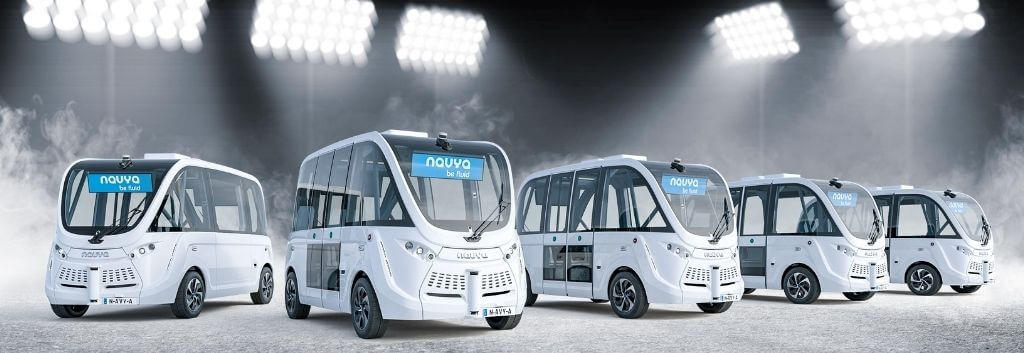
About GAUSSIN MACNICA MOBILITY

GAUSSIN MACNICA MOBILITY (formerly NAVYA, hereinafter Gama) is a leading company providing autonomous driving solutions.
With the mission of solving traffic problems through autonomous driving, we are working on easing traffic congestion and helping vulnerable road users based on the concept of "first and last mile." In May 2023, Macnica and France's GAUSSIN established a new company (GAUSSIN MACNICA MOBILITY) aimed at developing autonomous, zero-emission mobility for the transportation of people and goods, and acquired the assets of the former NAVYA. In addition to taking over the business, we will also provide solutions for large tractors and AGVs for private land use.
concept
Gama's autonomous driving solutions are designed for commercial use and support the commercialization of autonomous driving services in a variety of use cases.
Safe and stable driving
- Proven and reliable autonomous driving system
- Clarified Operational Design Domain (ODD)
- Compliance with safety standards to ensure safety
Safe and stable operation
- Comprehensive maintenance program
- hardware and software
quality assurance
usability
- Commercial vehicle design and functional design
- Utilization of complex systems and tools
feasibility
- Building an effective service model
- Setting KPIs and Visualized Evaluation Indicators
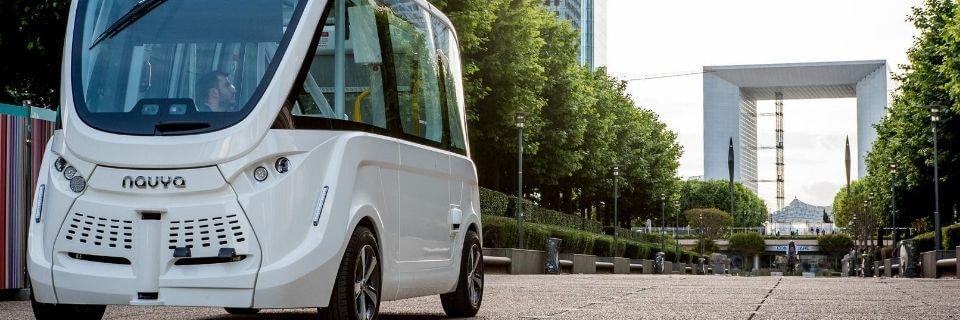
solution
Gama offers solutions such as "autonomous driving EV buses" that can seat up to 15 people and can travel on public roads, and "autonomous driving towing tractors" that can be used at airports, plants, etc.
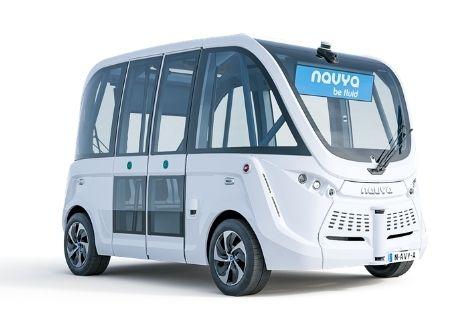
autonomous driving EV bus
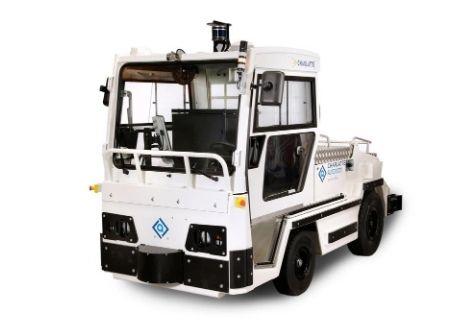
Self autonomous driving towing tractor
Achievement
Gama's autonomous driving solutions have been installed on more than 200 vehicles in more than 23 countries.
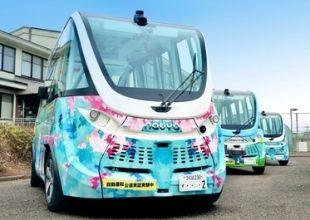

autonomous driving EV bus
Ibaraki/Sakaimachi
Two vehicles operate on fixed schedules and routes as daily route buses connecting the town. This contributes to improving the convenience of local residents and the ease of getting around the town.
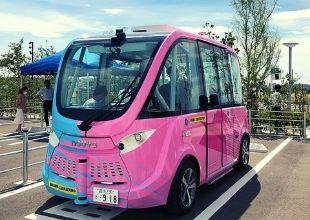

autonomous driving EV bus
Tokyo/Haneda Innovation City
It operates regularly as a free circulation bus within the commercial facility. We provide facility visitors with convenient movement within the premises and an innovative experience.
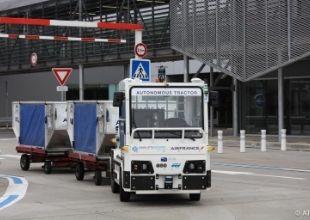

Self autonomous driving towing tractor
France/Toulouse
A demonstration experiment is being conducted at Toulouse-Blagnac Airport. It automatically transports containers loaded with baggage on a route of about 1.5 km.
autonomous driving shuttle bus
Gama offers two types of autonomous driving EV buses: "EVO" that supports level 4 and "ARMA" that supports level 3. Since it can also be driven on public roads, by connecting to the public transportation network, it can be effective in solving social issues such as helping vulnerable road users and alleviating traffic congestion. In addition, in private areas such as parks, commercial facilities, and factories/plants, by increasing the ease of movement within the area and profitability, it contributes to attracting customers and improving costs. It has already been used in more than 23 countries and provides safe, reliable, and comfortable transportation.
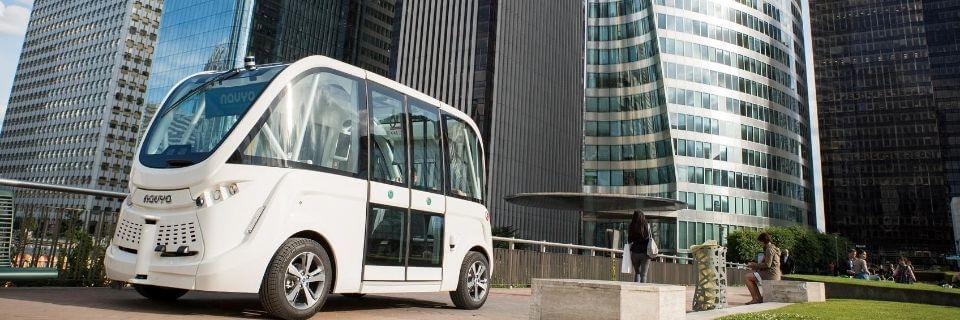
EVO
Overview
EVO is a new autonomous driving EV bus released by NAVYA in July 2020. In limited areas such as private land, fully autonomous driving at Level 4* is achieved without the need for an operator.
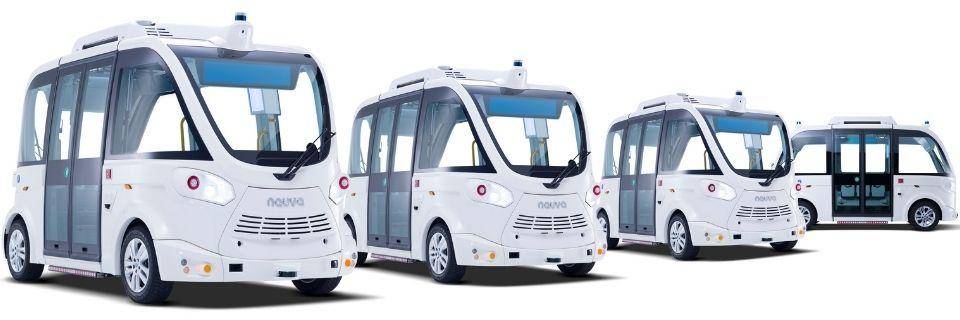
Level 4*
autonomous driving system
No handle, accelerator, or brake
(With safety function)
vehicle size
Total length 4.78m
Width 2.10m
Height 2.67m
15 passengers
11 seats
Standing 4 people
Speed 25km/h
Recommended speed in Japan
Less than 20km/h
EV (electric vehicle)
Maximum running time 9 hours
Mileage: 100km
*Only when the driving environment conditions based on ODD (Operating Design Domain) are met.
vehicle design
It is a comfortable and reliable vehicle design that puts passengers first. With a spacious cabin space that can accommodate up to 15 people, it is possible to provide a variety of user experiences. A dashboard that displays operation information is installed in the vehicle interior, and information screens are installed in the front and rear of the vehicle as a means of communication with the surrounding environment, such as pedestrians. In addition, it is equipped with a non-step bus that eliminates steps at the entrance and an SOS system for emergencies.
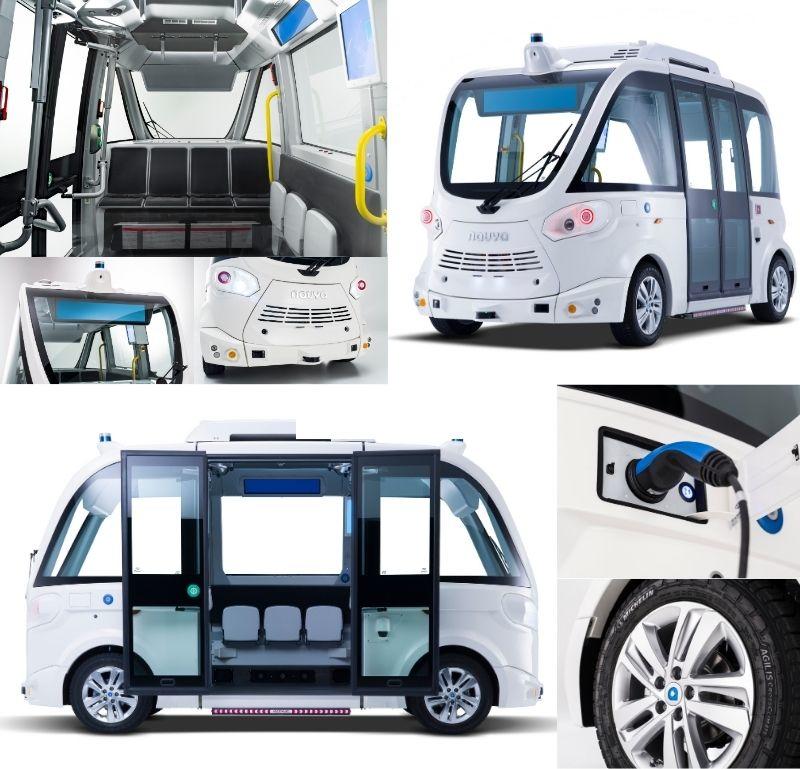
System configuration
It is equipped with various sensors and technologies necessary for autonomous driving.
1
LiDAR
Detects obstacles by irradiating infrared rays and receiving infrared rays reflected by objects. The 3D type is used for the roof, and the 2D type is used for the bumper.
2
Odometry
The mileage is calculated based on the number of tire rotations.
3
GNSS
Used for locating vehicles. Real-time kinematics (RTK) techniques are used to share reference station information to achieve an error of a few centimeters.
4
camera
Installed one at the front and back to check the safety around the vehicle.
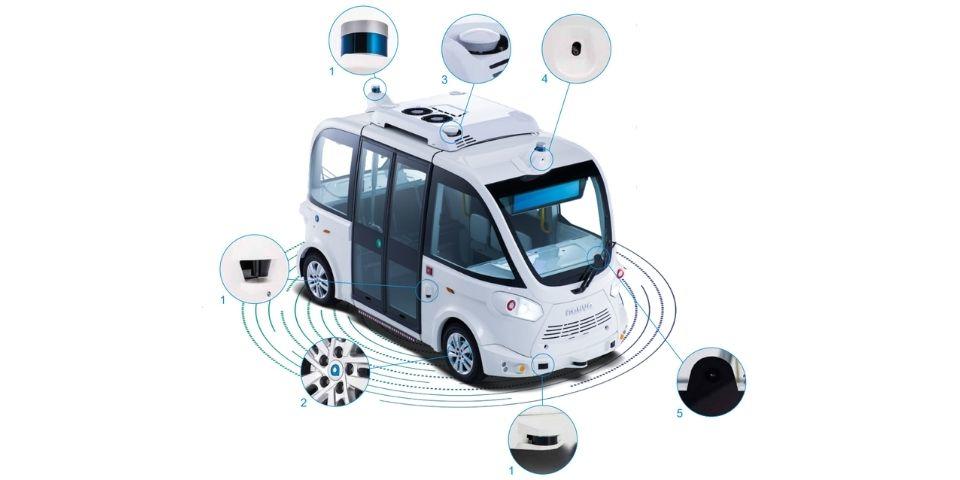
5
sensing sensor
It senses external light and raindrops and activates the auto lights and auto wipers.
●
SLAM
Map information created in advance using LiDAR information is matched with current LiDAR information to identify the position of the vehicle.
●
V2X
It receives data from various infrastructures installed on roads such as traffic lights and complies with traffic rules.
●
Remote monitoring and control
In case of emergency, monitoring at the central control center and remote control will be implemented if intervention is required.
ARMA
Overview
ARMA is a autonomous driving autonomous driving bus with a seating capacity of 15 people and a maximum speed of 25 km/h. It is an EV (electric vehicle) model and can run automatically for about 9 hours (100 km) on a single charge.
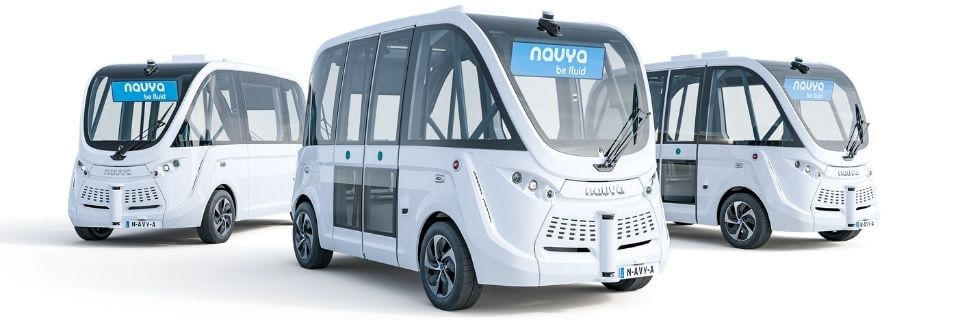
Level 3*
autonomous driving system
No handle, accelerator, or brake
(With safety function)
vehicle size
Total length 4.75m
Width 2.11m
Height 2.65m
15 passengers
11 seats
Standing 4 people
Speed 25km/h
Recommended speed in Japan
Less than 20km/h
EV (electric vehicle)
Maximum running time 9 hours
Mileage: 100km
*Only when the driving environment conditions based on ODD (Operating Design Domain) are met.
vehicle design
Comfortable and reliable vehicle design puts passengers first. The maximum number of passengers is 15 (11 seated, 4 standing), and the interior is 4.75 m long, 2.11 m wide, and 2.65 m high, providing a spacious and comfortable interior. The inside of the vehicle is equipped with a display that displays operational information, and the front and rear of the vehicle are equipped with information screens as a means of communication with the surrounding environment, including pedestrians. The bus will also be equipped with a non-step bus that eliminates the steps at the entrance and an SOS system for emergencies.
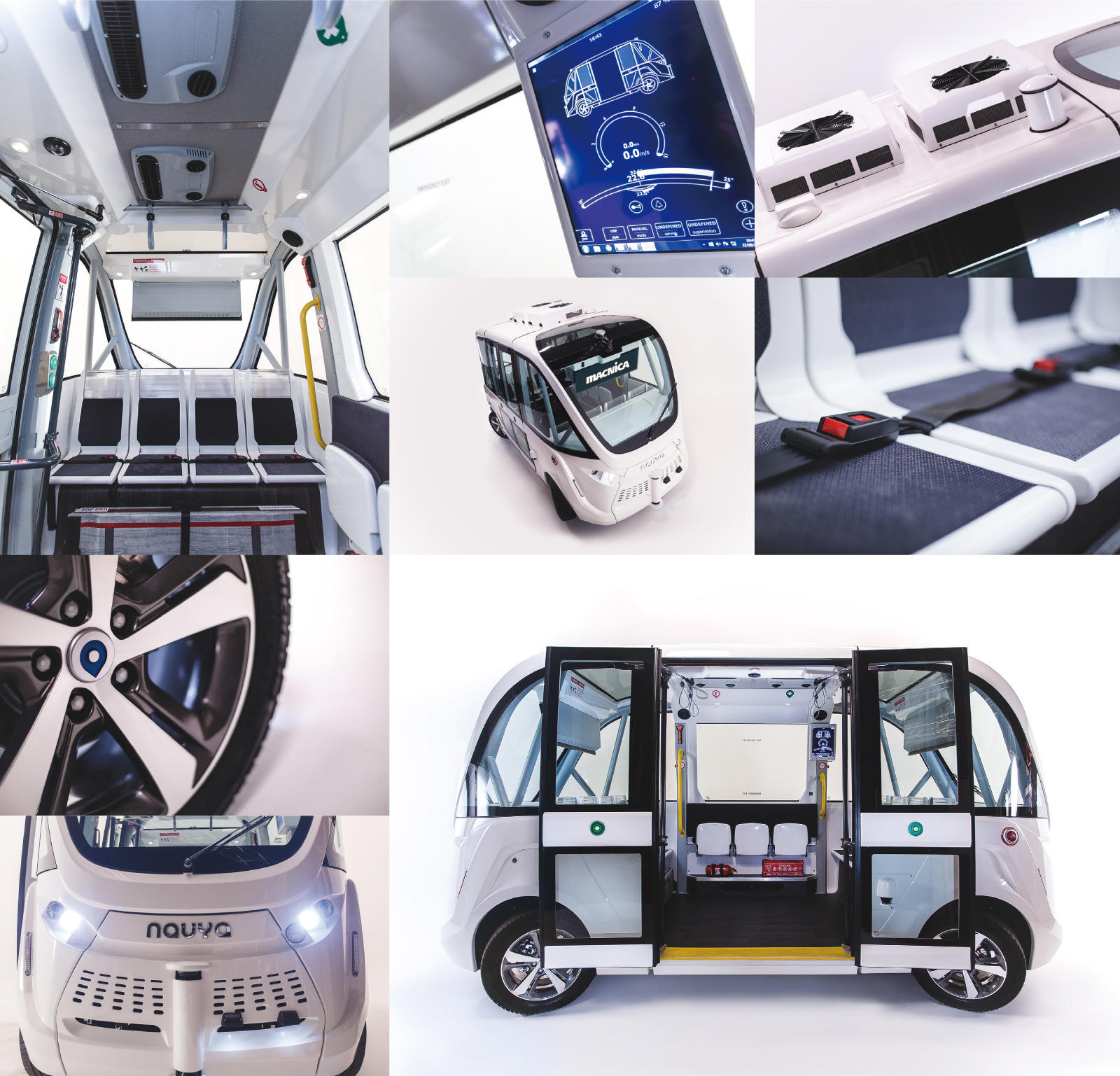
System configuration
It is equipped with various sensors and technologies necessary for autonomous driving.
A
GNSS
Used for locating vehicles. Real-time kinematics (RTK) techniques are used to share reference station information to achieve an error of a few centimeters.
B
camera
Installed one at the front and back to check the safety around the vehicle.
C
LiDAR
Detects obstacles by irradiating infrared rays and receiving infrared rays reflected by objects. The 3D type is used for the roof, and the 2D type is used for the bumper.
D
Odometry
The mileage is calculated based on the number of tire rotations.
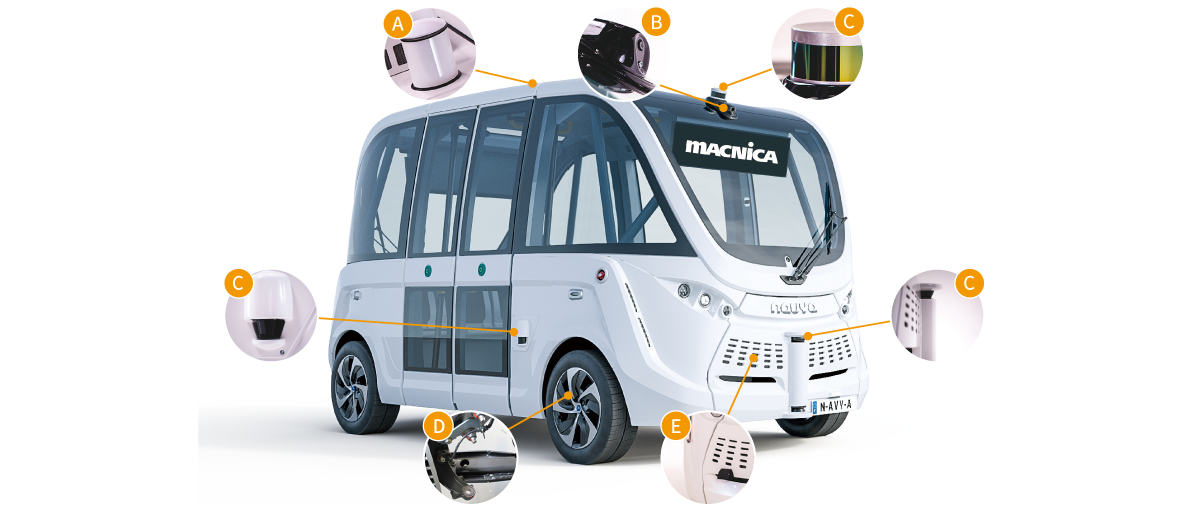
E
IMUs
It senses the behavior of the vehicle by combining an acceleration sensor and an angular velocity (gyro) sensor.
●
SLAM
Map information created in advance using LiDAR information is matched with current LiDAR information to identify the position of the vehicle.
●
V2X
It receives data from various infrastructures installed on roads such as traffic lights and complies with traffic rules.
●
Remote monitoring and control
In case of emergency, monitoring at the central control center and remote control will be implemented if intervention is required.
Comparison of EVO and ARMA
| item | EVO | ARMA | |
| system | autonomous driving level | Level 4* | Level 3* |
| size | full length | 4.78m | 4.75m |
| Width | 2.10m | 2.11m | |
| Height | 2.67m | 2.65m | |
| weight | 2,600kg | 2,400kg | |
| Boarding capacity | Number of people | 15 people | 15 people |
| energy | Uptime (average) | 9 hours | 9 hours |
| operating temperature | -10℃~40℃ | 10℃~40℃ | |
| engine | speed (recommended speed) | 25km (less than 20km) | 25km (less than 20km) |
| Maximum climbing ability | 10~12% | 10~12% | |
| sensor | LiDAR | 10 (3D x 8, 2D x 2) | 8(3D x 6、2D x 2) |
| GNSS | 2 | 2 | |
| camera | 2 | 2 | |
| IMUs | 2 | 1 | |
| Odometry | 1 | 1 | |
| Equipment | Information display | 28 inch (inside car) x 1 38 inches (external) x 2 |
15 inch (inside car) x 1 38 inch (outside vehicle) x 2 |
| Safety device | can be | can be | |
*Only when the driving environment conditions based on ODD (Operating Design Domain) are met.
Use Case
EVO/ARMA can be driven on public roads in Japan. In addition, in private areas, by increasing the ease of movement within the area and profitability, we contribute to attracting customers and improving costs.
smart city
Improve convenience by connecting to public transportation networks
Commercial facility
Improved mobility in large facilities
resort hotel
Providing the scenery seen from the large train window as UX
airport
Ideal as a means of transportation between terminals
university
Supporting students' mobility regardless of the weather
Factory/Plant
Enables smooth movement of employees within the premises
Parks/ Theme parks
Can also be used as a hands-on attraction
hospital
Used for automatic transport of medical supplies and specimens
Click here for a case study →
Implementation process
プロジェクトの立案からサービスインまで最短3か月で実現します。
consulting
Define project requirements and schedule
Feasibility
Pre-verification of feasibility and system design
commissioning
Create driving routes and set driving environment conditions
operation
Maintenance in operation and verification of introduction effect
Self autonomous driving towing tractor
Gama's autonomous driving towing tractor automatically transports containers loaded with cargo and baggage at airports, factories, plants, etc. It saves labor and contributes to reducing labor shortages and costs.
AT135
Overview
AT135 is a autonomous driving tractor equipped with NAVYA's autonomous driving system on the electric tractor vehicle of CHARLATTE MANUTENTION in France. At a maximum speed of 15km/h (manual operation maximum speed of 25km/h), a maximum weight of 25t can be towed.
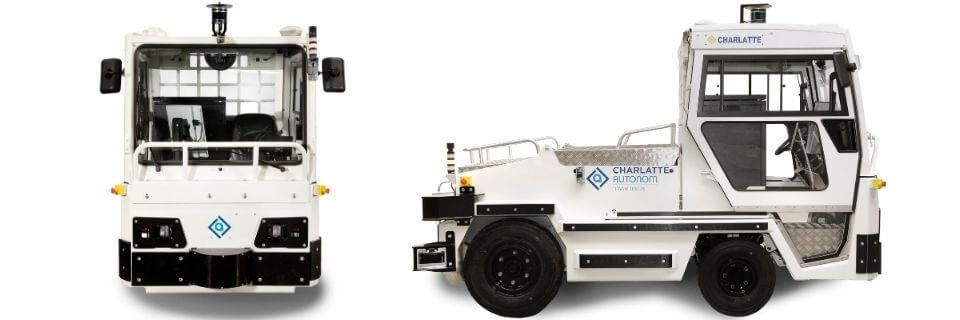
autonomous driving system
Manual operation possible
EV (electric vehicle)
Maximum speed 15km/h
Manual operation 25km/h
Maximum towing weight 25t
autonomous driving system
It is equipped with various sensors and technologies necessary for autonomous driving systems.
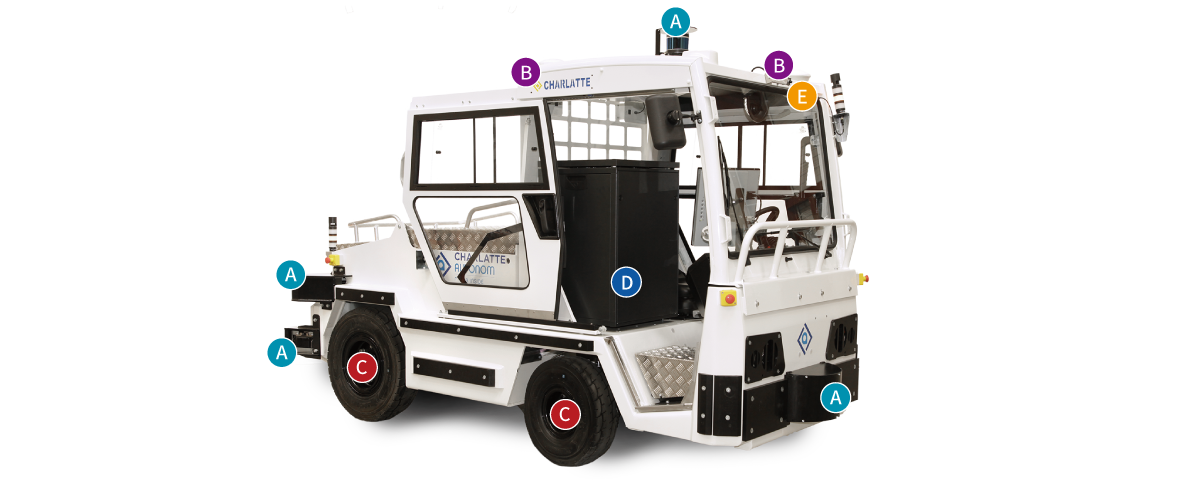
A
LiDAR
Detects obstacles by irradiating infrared rays and receiving infrared rays reflected from objects. Obstacles are detected three-dimensionally using the 3D type.
B
GNSS
Used for locating vehicles. Real-time kinematics (RTK) techniques are used to share reference station information to achieve an error of a few centimeters.
C
Odometry
The mileage is calculated based on the number of tire rotations.
D
IMUs
It senses the behavior of the vehicle by combining an acceleration sensor and an angular velocity (gyro) sensor.
E
camera
Install one in front and one in back to check the safety around your vehicle. It also checks whether the vehicle is traveling on the planned route correctly (to be supported in the future).
Use Case
It can be used for automatic transportation of cargo in large areas such as airports, factories, plants, and harbors.
airport
Factory/Plant
port
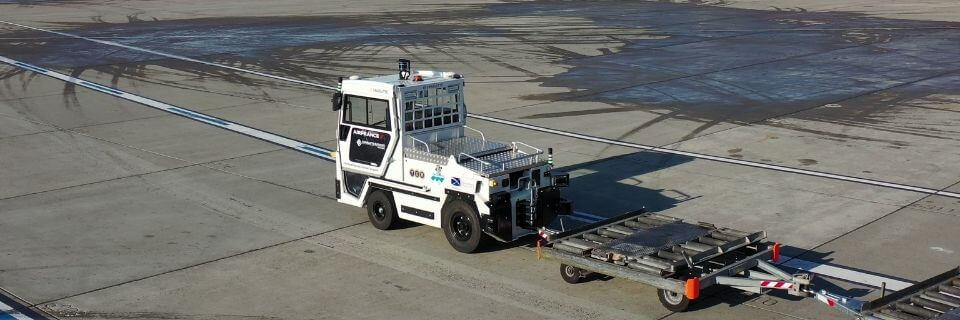
Implementation process
プロジェクトの立案からサービスインまで最短3か月で実現します。
consulting
Define project requirements and schedule
Feasibility
Pre-verification of feasibility and system design
commissioning
Create driving routes and set driving environment conditions
operation
Maintenance in operation and verification of introduction effect
Document download
Please download documents related to Gama products from here. We provide information on features and detailed specifications.
Inquiry
If you have any questions or concerns regarding Gama products, please feel free to contact us here.
